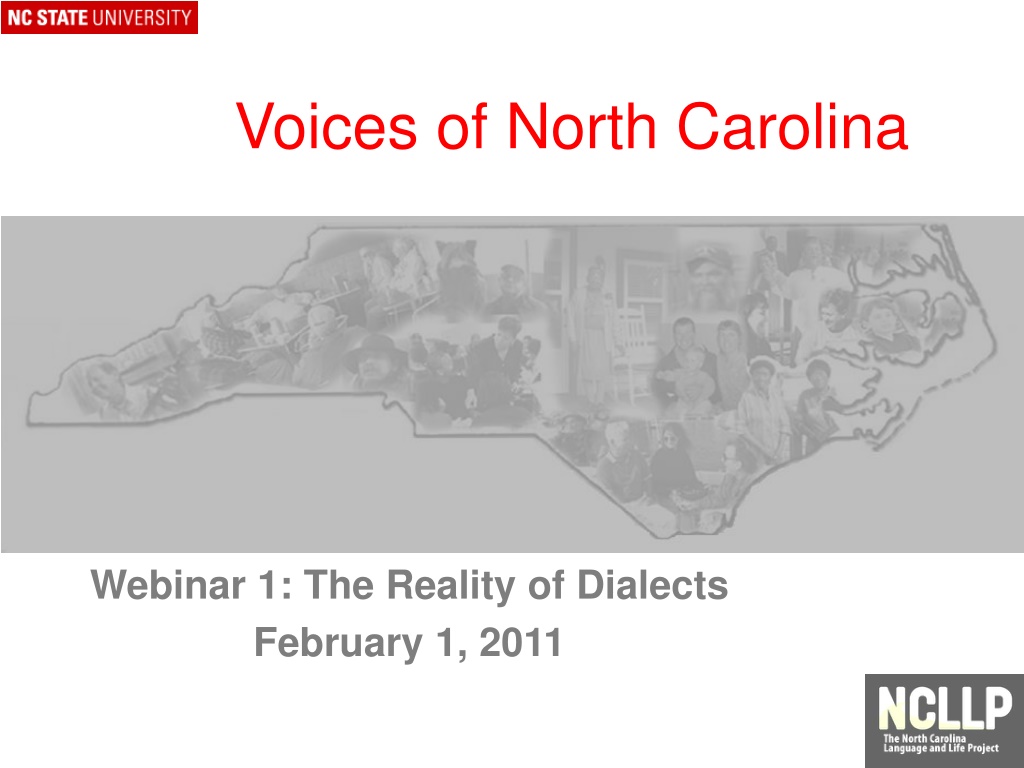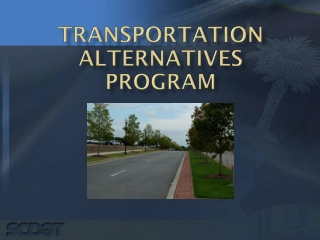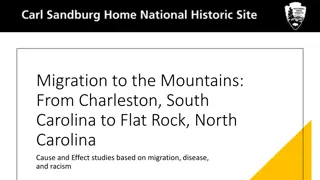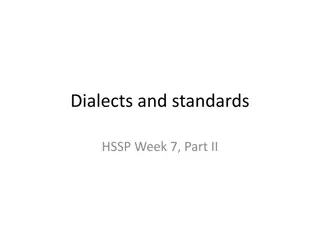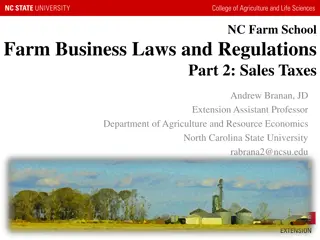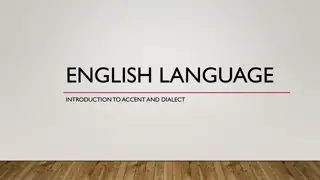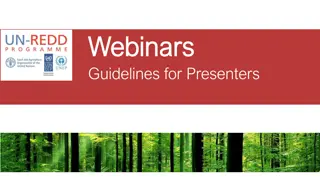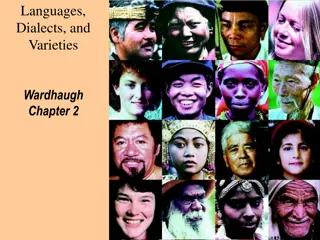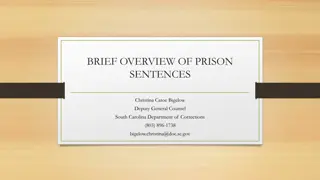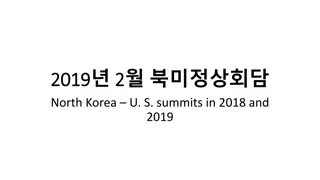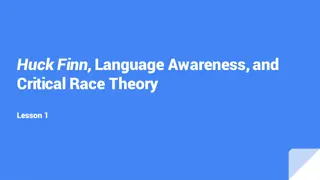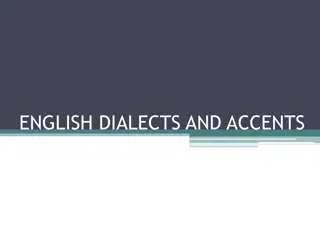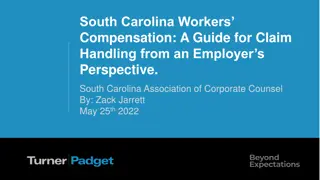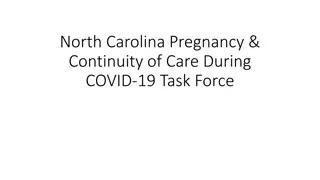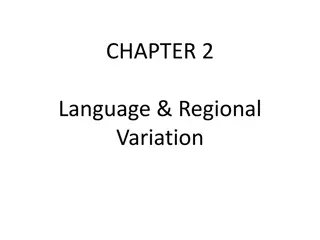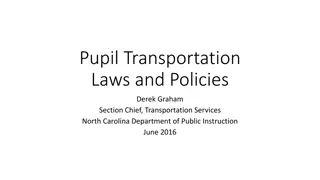Exploring Dialects in North Carolina: A Comprehensive Webinar
Unravel the nuances of dialects in North Carolina through a webinar that delves into language myths, analysis tools, and diverse dialect patterns, including African American English, Cherokee, and more. The curriculum aligns with educational standards and explores the impact of geography, diverse groups, and changing demographics in the state's history and development.
Download Presentation

Please find below an Image/Link to download the presentation.
The content on the website is provided AS IS for your information and personal use only. It may not be sold, licensed, or shared on other websites without obtaining consent from the author. Download presentation by click this link. If you encounter any issues during the download, it is possible that the publisher has removed the file from their server.
E N D
Presentation Transcript
Voices of North Carolina Webinar 1: The Reality of Dialects February 1, 2011
Introduction to the webinar 3 hours online 7 hours outside work 1 CEU Topics include: Language myths Tools for language analysis -African American English Dialect patterns -Cherokee Outer Banks English Mountain Talk -Lumbee English -Spanish -Language ideology
Introduction to the webinar 450-minute, multi-media instructional unit Classroom, teacher-taught Dovetails with the NC 8thgrade social studies Standard Course of Study NC Department of Public Instruction endorsed Products Teacher manual Student workbook Extensive online media Dialect Jeopardy! Downloadable at: http://ncsu.edu/linguistics/dialectcurriculum.php
Dovetailing with the SCS NC eighth-grade SCS objective 1.01 Assess the impact of geography on the settlement and developing economy of the Carolina colony 1.07 Describe the roles and contributions of diverse groups, such as American Indians, African Americans, European immigrants, landed gentry, tradesmen, and small farmers to everyday life in colonial North Carolina, and compare them to the other colonies 3.05 Compare and contrast different perspectives among North Carolinians on the national policy of Removal and Resettlement of American Indian populations Met in curriculum by: Isolation caused by ocean, swamps, and mountains is examined, as is the Great wagon Road American Indians, African Americans, and diverse groups of European Americans are examined in urban and rural contexts The historical contexts of the Lumbee and Cherokee are contrasted, including the early integration and loss of native tongue for the Lumbee and the forced removal and return of the Cherokee
Dovetailing with the SCS NC eighth-grade SCS objective 8.01 Describe the changing demographics in North Carolina and analyze their significance for North Carolina's society and economy Met in curriculum by: One of the fastest growing populations in North Carolina is Hispanics. This causes people to make assumptions about the effects of this group. The linguistic and social effects are examined Understanding regional diversity can be enhanced by examining regional linguistic diversity, which is reflective of social and economic institutions 8.04 Assess the importance of regional diversity on the development of economic, social, and political institutions in North Carolina In total, the curriculum directly addresses 12 objectives and 6 of 9 strands
Curriculum goals To develop a respect for the systematic patterning of all language varieties To develop an appreciation for the link between historical development and language and culture To gain authentic knowledge about how dialects pattern To develop an awareness and appreciation for other ways of speaking
Other curriculum characteristics Extensive background information for teachers Easy to use layout Flexible lesson ideas Variety of activities Accommodates multiple learning styles Teaching tips Extensive multimedia resources Minimal linguistics vocabulary Positive portrayals of languages, cultures, and people Answer keys with careful explanations
What does a voice tell us? In a moment, you will see two short video clips. As you watch the first vignette, try to imagine what the speaker is like. Think about all the characteristics of a person that may be associated with a voice As you watch the second vignette, think about how language prejudice evolves and how it may affect different groups in different settings.
What does a voice tell us? In a moment, you will use your Web browser to view two short video clips. As you watch the first vignette, try to imagine what the speaker is like. Think about all the characteristics of a person that may be associated with a voice. The first clip is located here: http://tiny.cc/wlyuh As you watch the second vignette, think about how language prejudice evolves and how it may affect different groups in different settings. The second clip is located here: http://tiny.cc/u3gic We will pause for 5 minutes while you watch these clips
Linguistic profiling Definition: Using vocal cues to identifying the probable ethnicity of a person (often over the telephone) and then discriminating against that person because of a perceived ethnic or social affiliation Can happen in many contexts, including employment, housing, access to services, criminal convictions Estimated to be between 2 to 4 million cases annually of linguistic profiling related to housing (between 6000 and 15,000 cases per day) Fair Housing Act: Sec. 804. [42 U.S.C. 3604 a-f] It shall be unlawful (b) To discriminate against any person in the terms, conditions, or privileges of sale or rental of a dwelling, or in the provision of services or facilities in connection therewith, because of race, color, religion, sex, familial status, or national origin.
Transforming dialect perception Entrenched language ideology The most persistent sociolinguistic challenge in all venues of public life continues to be the widespread application of the principle of linguistic subordination: Discrimination based on language variation is so commonly accepted, so widely perceived as appropriate, that it must be seen as the last back door to discrimination. And the door stands wide open Lippi-Green, 1997: 73
The importance of language study Of what use is linguistics? In the lives of individuals and of society, language is a factor of greater importance than any other. For the study of language to remain solely the business of a handful of specialists would be a quite unacceptable state of affairs. In practice, the study of language is in some degree or other the concern of everyone. (Ferdinand de Saussure, 1916)
Challenges Principle of linguistic subordination Lack of established tradition of education in public schools Insufficient sociolinguistic information in teacher preparation The mis-education of the American public Acceptance of popular interpretations of lay experts as correct views about language differences
Linguists everywhere That s the good thing about dialects; anybody can do it as a hobby. Taxi cab driver, Albuquerque January 5, 2006 It ain t what you don t know that gets you in trouble. It s what you know for sure that just ain t so. Mark Twain
Dialect myth A dialect is something that someoneelse speaks MYTH Everyone who speaks a language speaks some dialect of the language REALITY
Dialect myths Dialects always have highly noticeable features that set them apart MYTH Dialect is not directly related to public commentary about its special characteristics REALITY
Dialect myths Dialects are ill-formed derivatives of Standard English MYTH Dialects are highly patterned, intricate and systematic varieties of a language REALITY
Dialect myths Regional and ethnic dialects are dying due to the influence of the mass media MYTH Dialects are dynamic; while some dialects are receding, others are intensifying. There is no universal convergence of dialects in the US REALITY
Dialect myths There is little reason to learn about dialects apart from innate curiosity MYTH There are significant scientific, social, historical, educational, and personal benefits from studying dialects REALITY
Dialect myths Speaking a dialect limits a student s ability to express academic concepts MYTH All language systems have roughly the same ability to express complexity REALITY
Language ideology Definition: The widely shared, common sense understanding of how language works and how it ought to work Closely linked to power Embedded in social conventions Used to legitimizing existing social relations and differences of power Most effective when its workings are least visible If one becomes aware that a particular aspect of common sense is sustaining power inequalities at one s own expense, it ceases to be common sense -Fairclough, 2001: 71
Linguistic patterns: pin/pen Listen to a Southern speaker pronounce the following pairs of words, which feature the short i" and short e vowels. You will then hear the same speaker pronounce a second list of word pairs with the same vowels. Pay careful attention to the pronunciations and try to figure out when this speaker says the short i" and short e vowels so that they sound alike.
Linguistic patterns: pin/pen List A: 1. tin and ten 2. kin and Ken 3. lin and Len 4. windy and Wendy 5. sinned and send List B: 1. lit and let 2. pick and peck 3. pig and peg 4. rip and rep 5. litter and letter Write a rule that describes the pattern for when i and e are pronounced the same and when they are pronounced differently
Linguistic patterns: pin/pen Use your rule to predict whether the speaker will pronounce the following pairs of words the same or differently 1. bit and bet 2. pit and pet 3. bin and Ben 4. Nick and neck 5. din and den
Answer key: 1. bit and bet 2. pit and pet 3. bin and Ben 4. Nick and neck 5. din and den differently differently same differently same
Definitions Dialect A form of a language spoken by a group of people from the same regional or cultural background. Everyone speaks a dialect, even though some dialects are more noticeable than others. Dialects differ in their vocabulary, pronunciation, and grammar.
Definitions Dialect vocabulary The ways in which speakers of a certain dialect use different words to mean the same thing. In different dialects, a sub is also known as a hoagie, torpedo, hero, poor boy, etc. Different dialects call a carbonated beverage pop, soda-pop, soda, coke, co-cola, or dope
Definitions Dialect pronunciation The different ways in which speakers of a different dialects would pronounce the same word. Similar to an accent. In eastern New England, many speakers drop the r off of words like mother and car. In the South, many speakers say greazy instead of greasy. The pin/pen merger is another example of a dialect pronunciation.
Definitions Dialect grammar The particular ways in which speakers of a certain dialect arrange sentences and words or convey grammatical information. In some parts of Western Pennsylvania and Ohio, speakers may say the car needs washed where other speakers say the car needs washing. Some people from the Appalachian Mountains or from the Outer Banks may say the man went a-hunting where other people may say the man went hunting.
Definitions Bias A tendency to act or feel a certain way about particular things. In our case, people are often biased against certain dialects. Bias can be overt or covert. That is, people may openly say things like, I don t like the way kids talk today or they may comment on a language variety indirectly by saying things like, people from up North are always in a hurry, which may mean that they speak in a rushed manner. Everybody has linguistic biases whether or not we are aware of it. Oftentimes, we project perceived characteristics of a group onto the language variety that the group speaks.
Levels of dialect For each number, decide whether the difference between the sentences is at the level of vocabulary, pronunciation, or grammar 1. That feller sure was tall That fellow sure was tall Pronunciation 2. That road sure is sigogglin That road sure is crooked Vocabulary 3. They usually bedoing their homework They usually do their homework Grammar
Levels of dialect For each number, decide whether the difference between the sentences is at the level of vocabulary, pronunciation, or grammar 4. I weren t there yesterday I wasn t there yesterday Grammar 5. They put their food in a bag They put their food in a poke Vocabulary 6. It s hoitoid on the sound soid It s hightide on the sound side Pronunciation
Levels of dialect 7. I was hanging out with my peeps I was hanging out with my friends Vocabulary 8. They re to the school right now They re at the school right now Grammar 9. They caught some fish They caught some feesh Pronunciation 10. They went hunting and fishing They went a-hunting and a-fishing Grammar
Key points Everyone speaks a dialect All dialects are patterned There is a difference between grammatical and acceptable Evaluations of dialects are really evaluations of the people who speak that dialect Linguists describe differences between dialects in terms of three levels: vocabulary, pronunciation, and grammar
Any questions? At this time, you may use the raise hand feature of the webinar software to ask any questions
Homework (estimated time: 2 hours) 1. 2. Watch background Webinar on the curriculum: http://tiny.cc/zaeuu Access the Voices of North Carolina curriculumonline (http://ncsu.edu/linguistics/download.php) Complete the a-prefixing and r-dropping exercises in the Student Workbook (pages 7-13) -Read: Teacher s Manual Days 1 and 2 -Watchvideos: Excerptfrom The Carolina Brogue (below Chapter 22); Chapters 23/24 on Mountain Talk ; Chapter 25 on Cherokee Write two observations or questions related to the exercises in #3 Write a brief reflection on language ideology or language bias Submit responses to #4 and #5 as a single attached file or in the body of a single email by 5:00 PM, February 18, to: VoicesWebinar@gmail.com 3. 4. 5. 6.
Use to access materials and videos Watch for Homework http://www.ncsu.edu/linguistics/dialectcurriculum.php
Videos Exercises located here Additional readings
If you need Quicktime The two videos used in today s webinar The Pin/Pen merger clips Videos used for homework activities
Homework (estimated time: 2 hours) 1. 2. Watch background Webinar on the curriculum: http://tiny.cc/zaeuu Access the Voices of North Carolina curriculumonline (http://ncsu.edu/linguistics/download.php) Complete the a-prefixing and r-dropping exercises in the Student Workbook (pages 7-13) -Read: Teacher s Manual Days 1 and 2 -Watchvideos: Excerptfrom The Carolina Brogue (below Chapter 22); Chapters 23/24 on Mountain Talk ; Chapter 25 on Cherokee Write two observations or questions related to the exercises in #3 Write a brief reflection on language ideology or language bias Submit responses to #4 and #5 as a single attached file or in the body of a single email by 5:00 PM, February 18, to: VoicesWebinar@gmail.com 3. 4. 5. 6.
